Termites Cause Damage to Homes
There are two main species of termites that affect U.S. homes: termites that live underground (subterranean termites) and those that live entirely in wood (drywood termites). Subterranean termites build colonies in the soil, whereas drywood termites can be found in the framing, furniture and hardwood flooring of homes. Both species of termites tend to be most active in areas with warmer climates, although subterranean termites can be found in every state in the U.S., except Alaska. While you likely aren’t concerned with differentiating between the two species of termites – as termite damage of any kind is a threat to your home.
Most people believe that termites are only active in the spring but termites are actually active throughout the year. Swarms, the most visible sign of termite activity, occur most often in the spring, but detecting the less obvious signs of an infestation could save you a lot of money and stress. Be sure to watch for signs of termite damage, including:
• Hollow-sounding wood: Termites prefer to be in dark, humid environments, so they do not 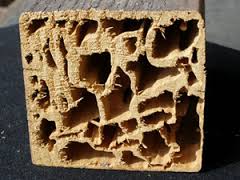 typically feed on the surface of wood, where they would be visible to the human eye. In fact, the wood’s surface might appear smooth, even if termites are inflicting damage. If wood sounds hollow when tapped, it may be because termites are eating the wood from the inside out.
typically feed on the surface of wood, where they would be visible to the human eye. In fact, the wood’s surface might appear smooth, even if termites are inflicting damage. If wood sounds hollow when tapped, it may be because termites are eating the wood from the inside out.
• Groups of winged insects (“swarmers”) or discarded wings:
Reproductive termites 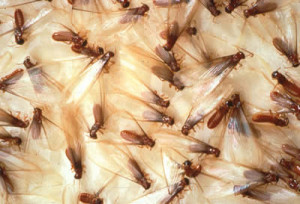 called swarmers take flight to create new colonies. Subterranean termites typically swarm in the spring, whereas drywood swarms are less predictable. If you see a swarm of insects or groups of discarded wings, call a termite specialist to inspect.
called swarmers take flight to create new colonies. Subterranean termites typically swarm in the spring, whereas drywood swarms are less predictable. If you see a swarm of insects or groups of discarded wings, call a termite specialist to inspect.
• Cracked or distorted paint on wood surfaces: Swarming drywood termites can enter through openings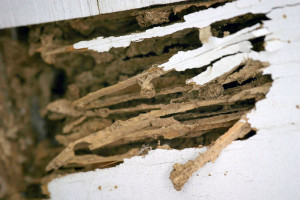 smaller than the edge of a dime, so monitor and seal any cracks in the home’s foundation and near roof siding, vents and windows.
smaller than the edge of a dime, so monitor and seal any cracks in the home’s foundation and near roof siding, vents and windows.
• Mud tubes on exterior walls: Subterranean termites build mud tubes on surfaces, such as 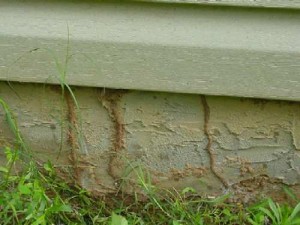 ahome’s foundation, to provide moisture while they are searching for food. Store mulch, firewood and wood chips away from the home to avoid creating moisture-rich habitats for termites to survive and thrive.
ahome’s foundation, to provide moisture while they are searching for food. Store mulch, firewood and wood chips away from the home to avoid creating moisture-rich habitats for termites to survive and thrive.
• Frass: Drywood termites produce wood-colored droppings called frass as they eat 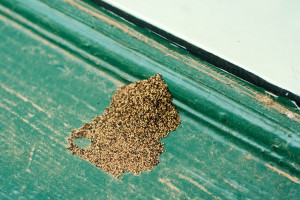 theirwaythrough infested wood. Keep gutters, downspouts and crawl spaces free of debris and cellulose materials to prevent food sources for termites.
theirwaythrough infested wood. Keep gutters, downspouts and crawl spaces free of debris and cellulose materials to prevent food sources for termites.
 |
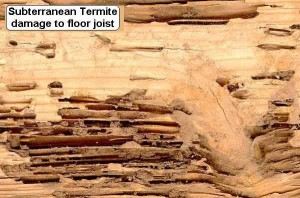 |
| Shelter Tubes on foundation wall | Floor Joist damaged by termites |
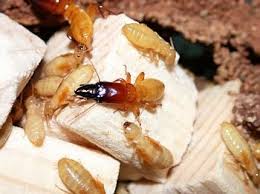 |
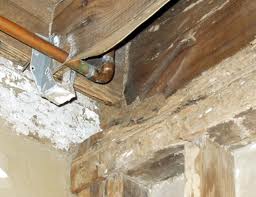 |
| Soldier and Worker termites | Termite damage in basement header board |


































































